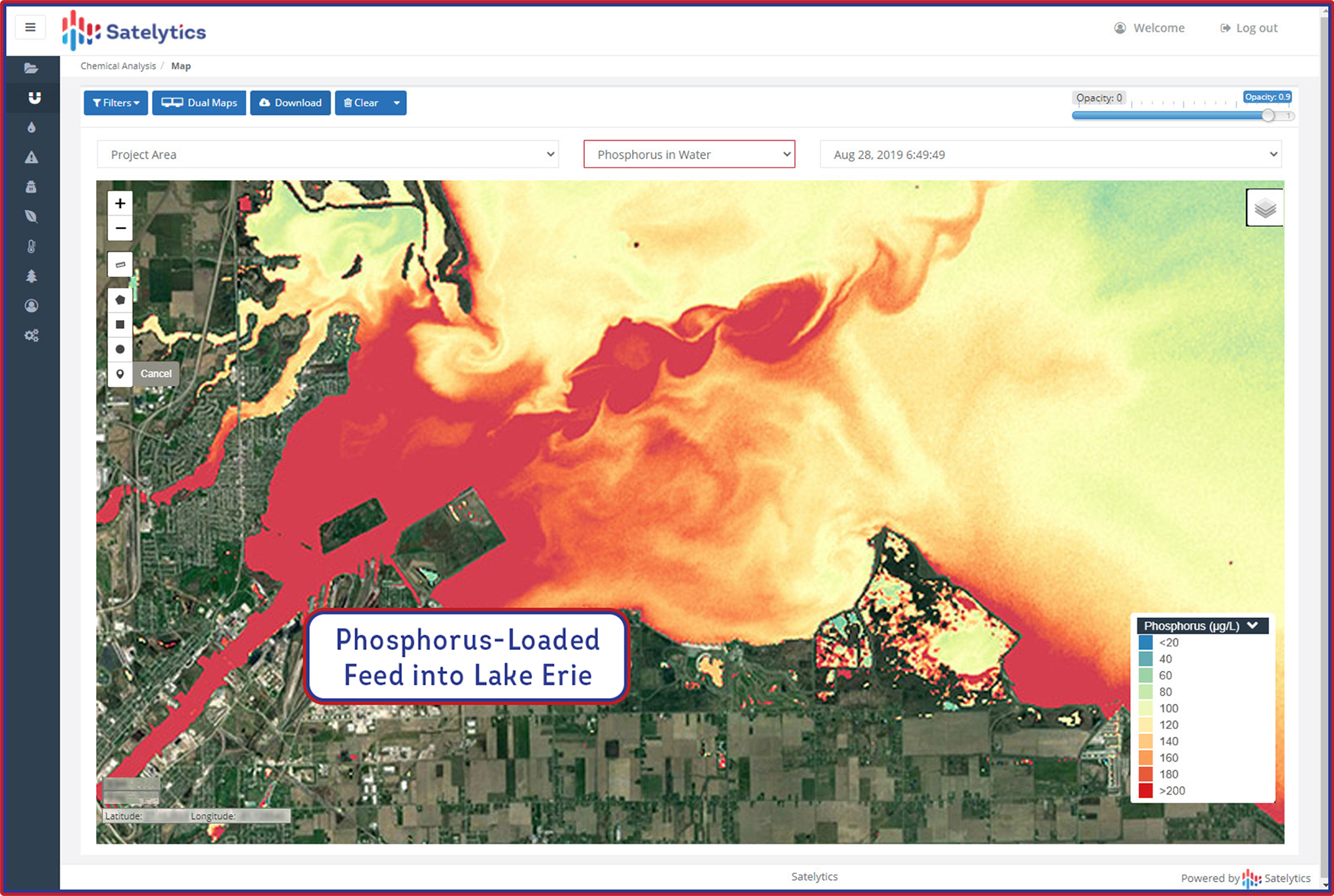
• Water & Wastewater

• Water & Wastewater
Summer is just getting started — and while that means the kids are out swimming and their hardworking teachers get some time to put their feet up — we know watershed managers are buckling down, preparing to battle whatever algal blooms come their way. On the shallow southwestern shores of Lake Erie we call home, the Satelytics team is all too familiar with the threats of cyanobacteria and harmful algal blooms (HABs). However, we also know what to look for to beat the blooms.

Satelytics' water quality measurement in Lake Erie.
From community ponds to lakes and rivers, Satelytics monitors entire waterbodies and alerts watershed managers to substances and conditions that trigger HABs:

Satelytics also gives watershed managers the tools to identify sources of sediment loading to plan preventative and remediation measures. Turbidity is quantifiable in nephelometric turbidity units (NTU), and a relative sediment model can also be provided. We also measure bathymetry, tracking natural and human-caused sediment build-up around infrastructure such as dams and canals.
Weathering HAB season is a breeze with Satelytics! Reach out today to learn how you, too, can have a relaxing summer.